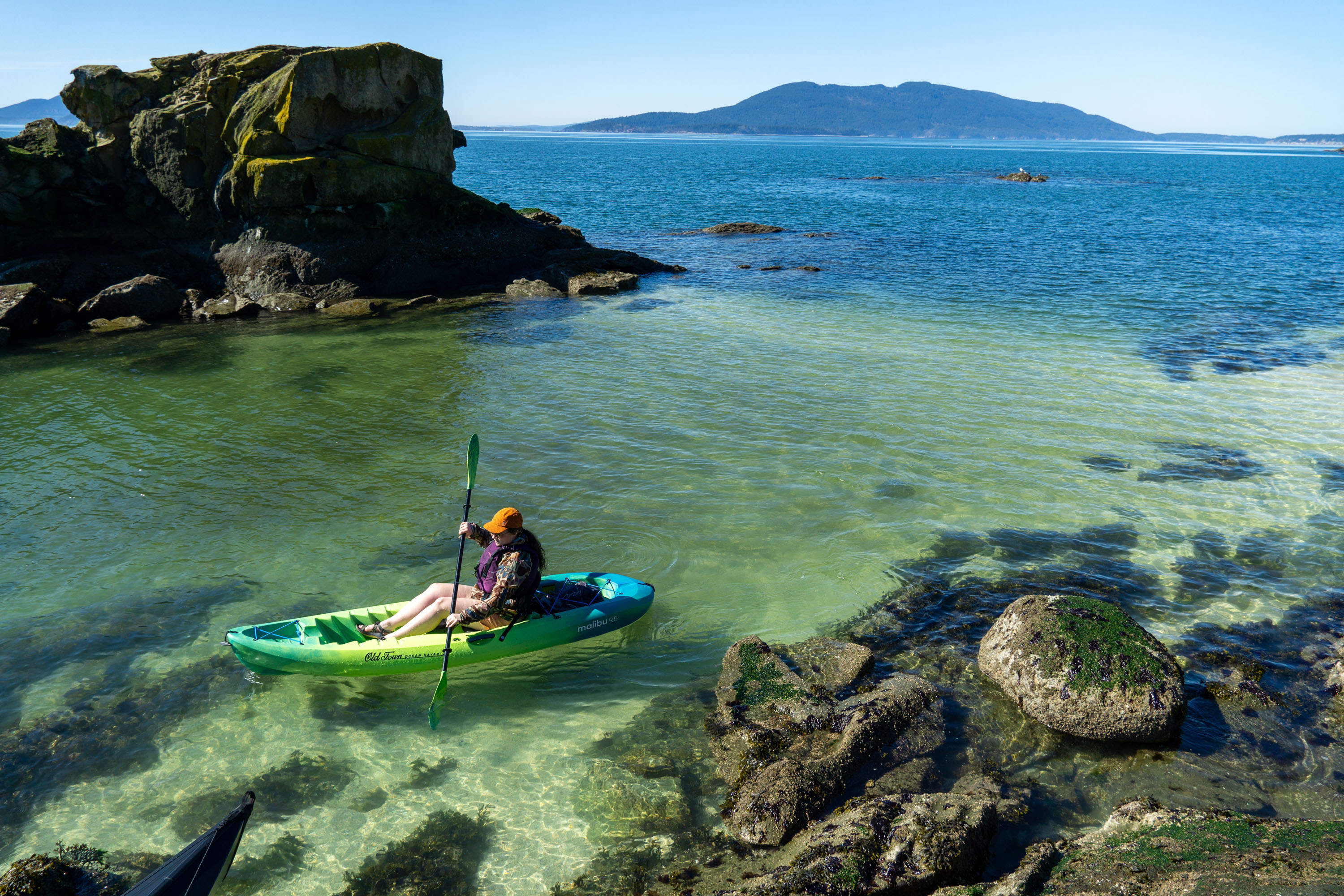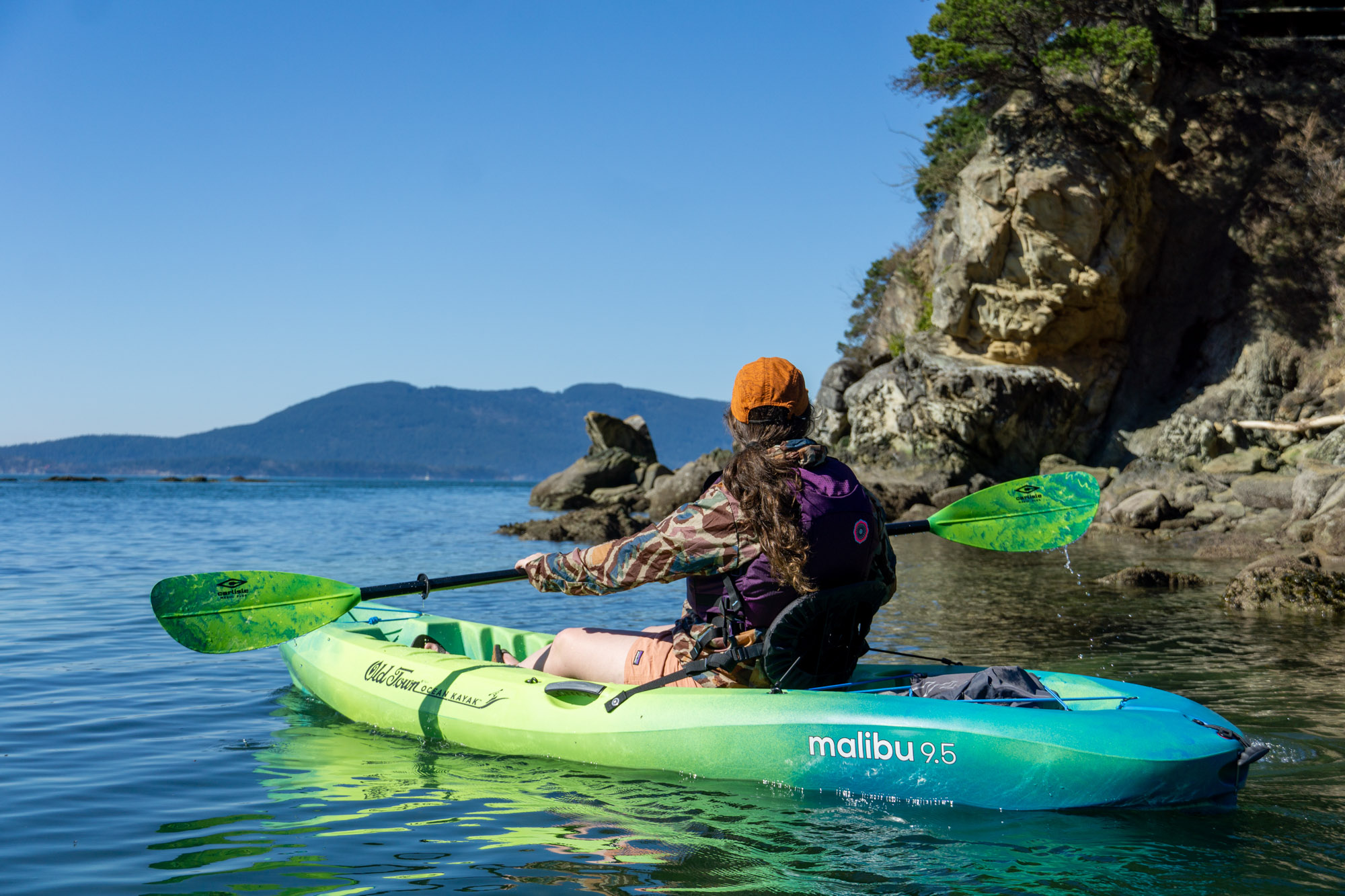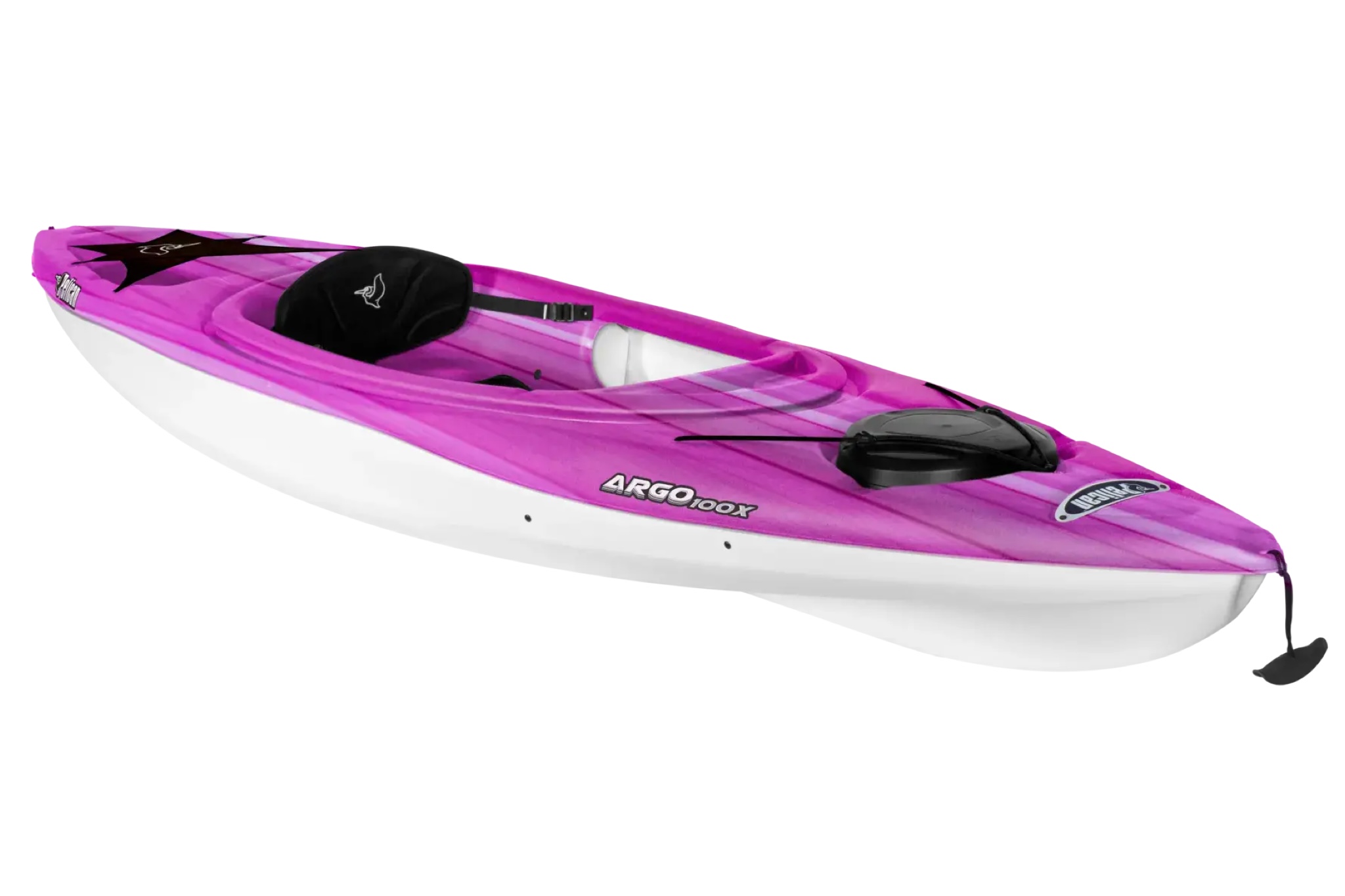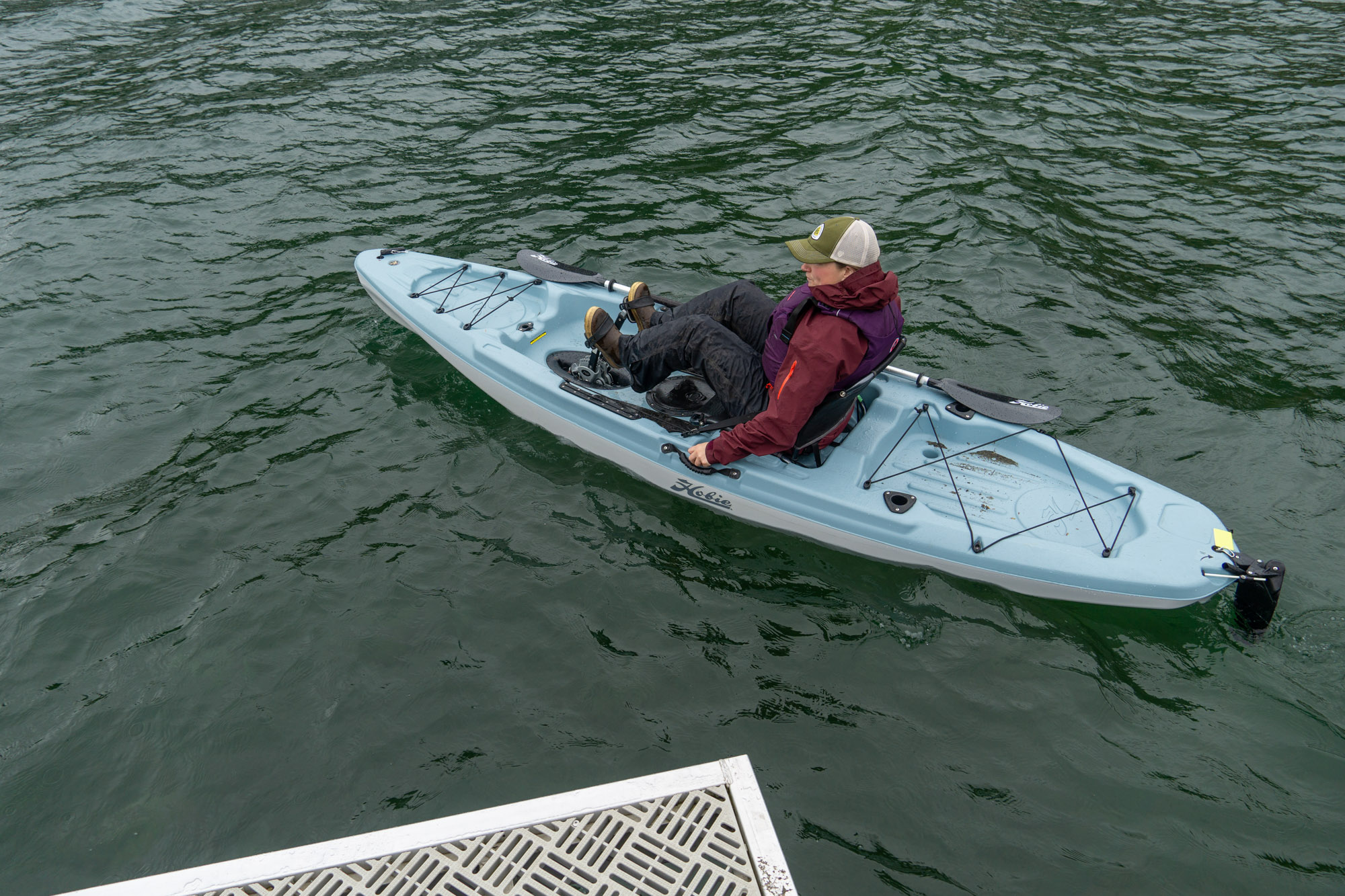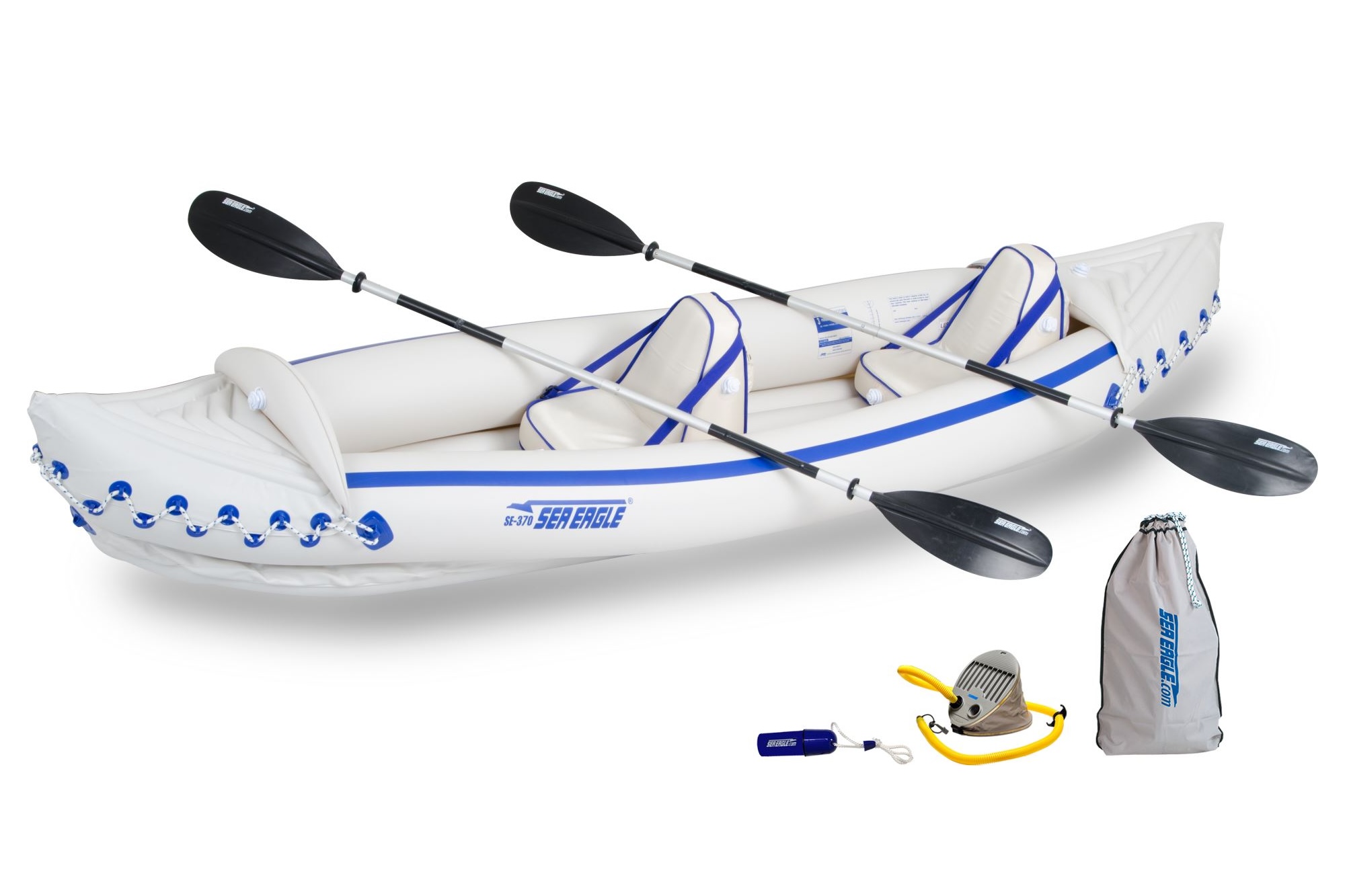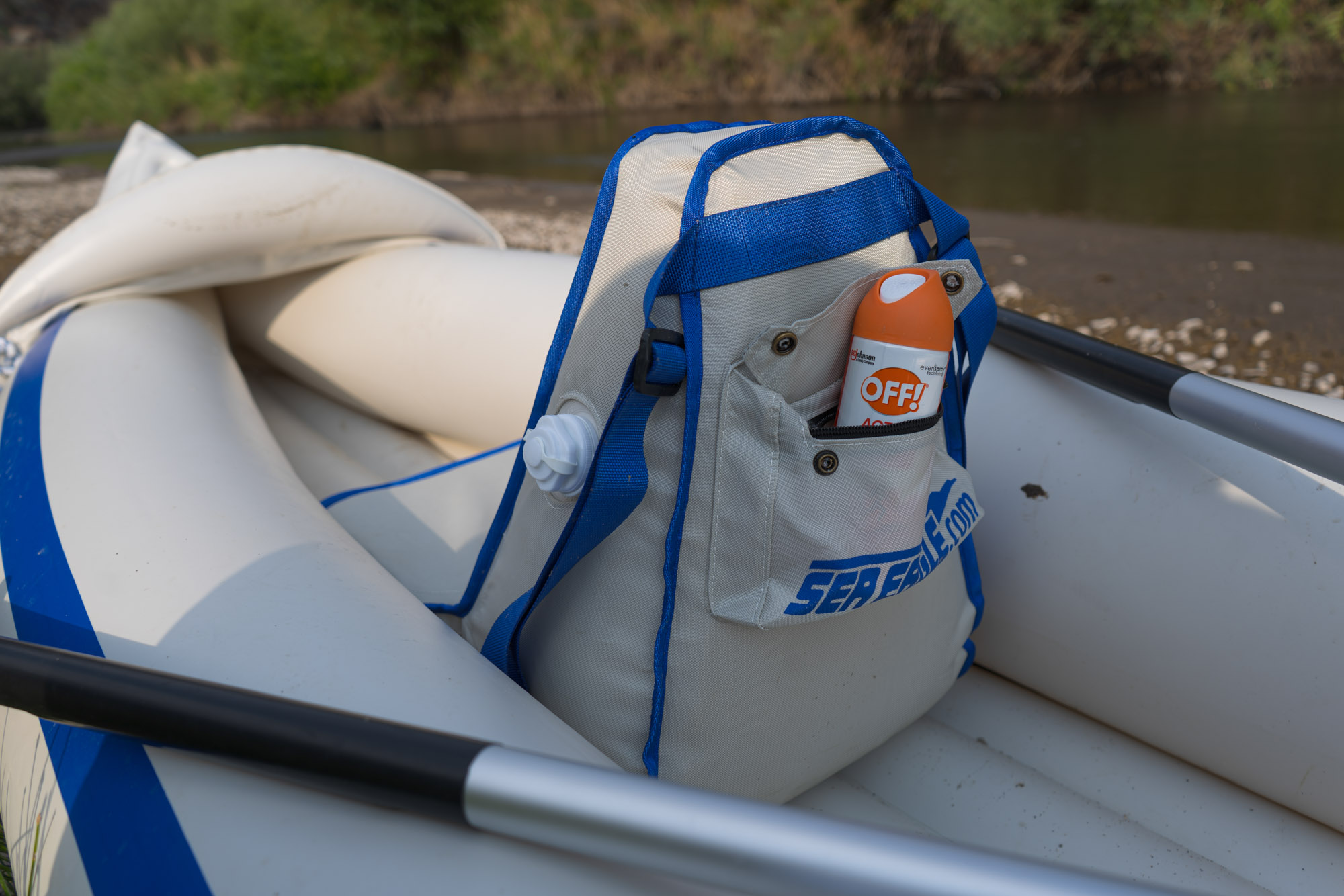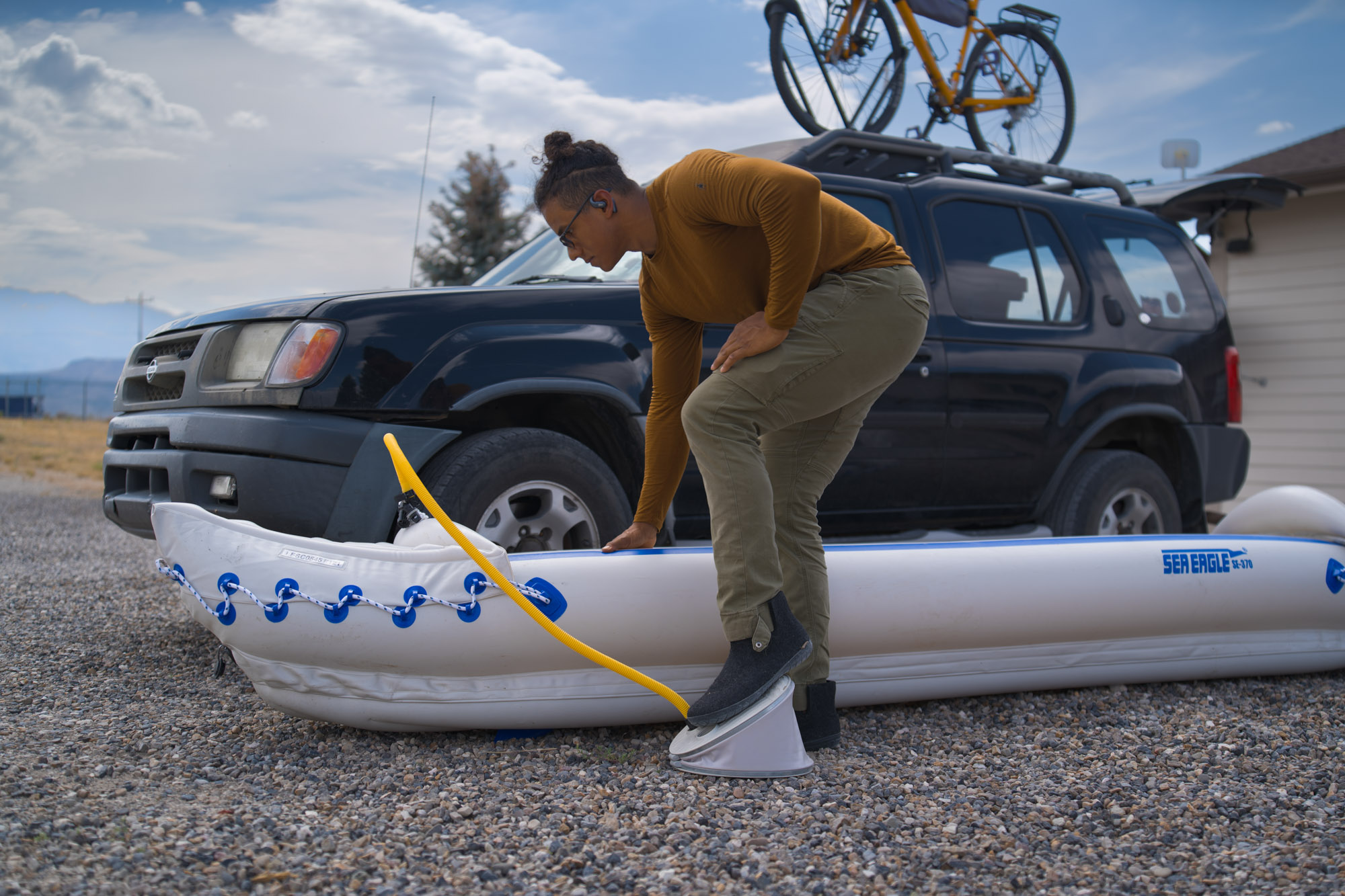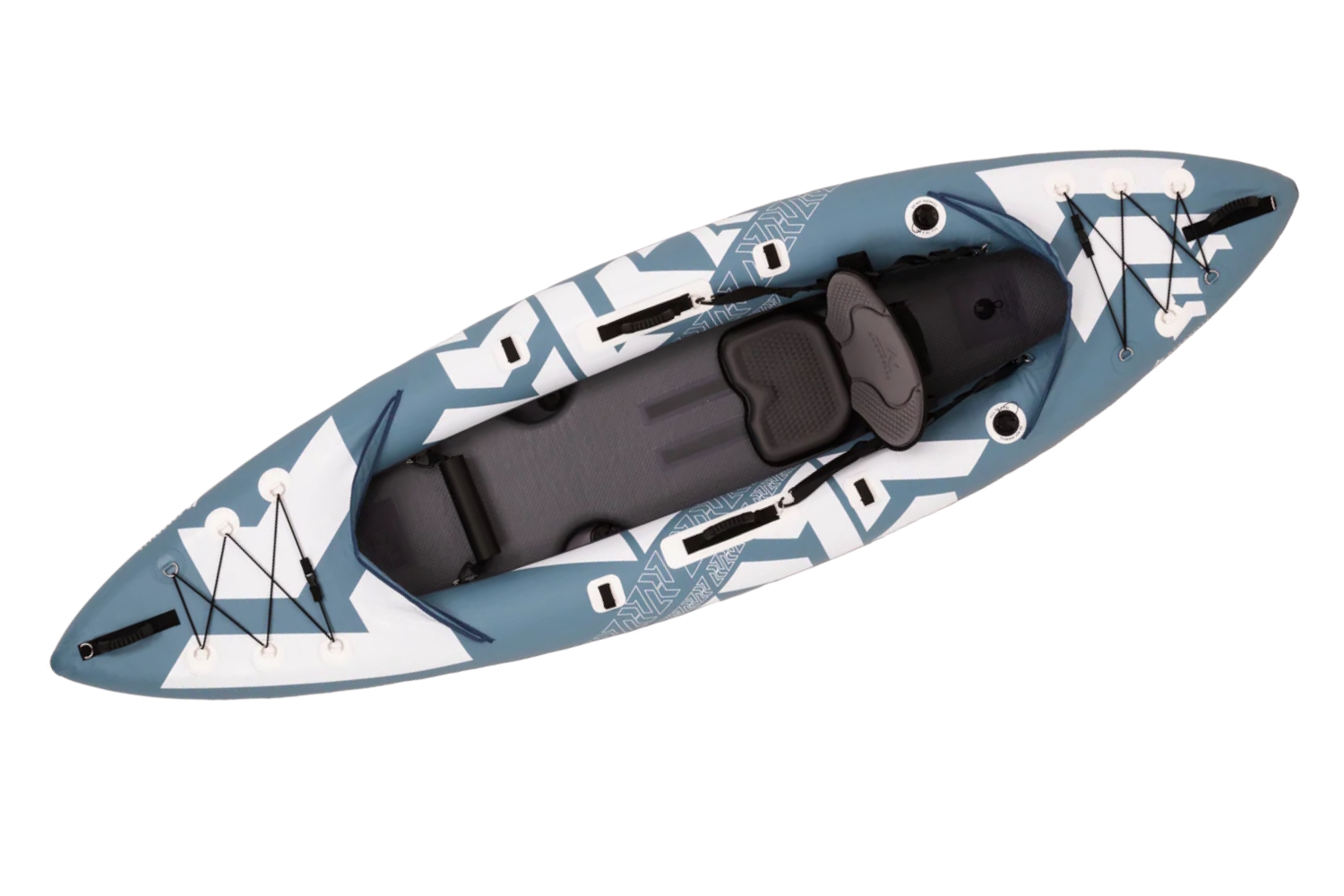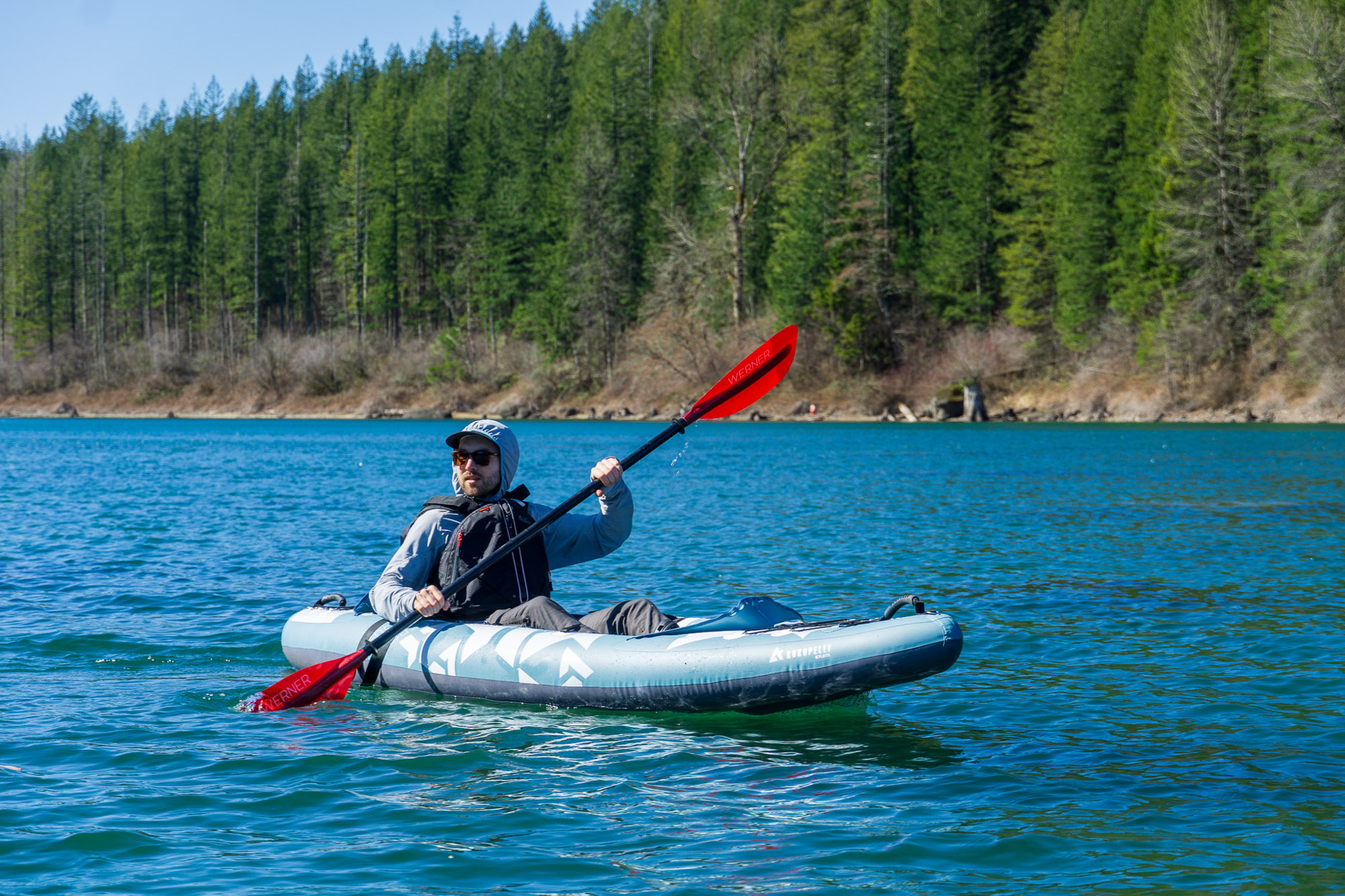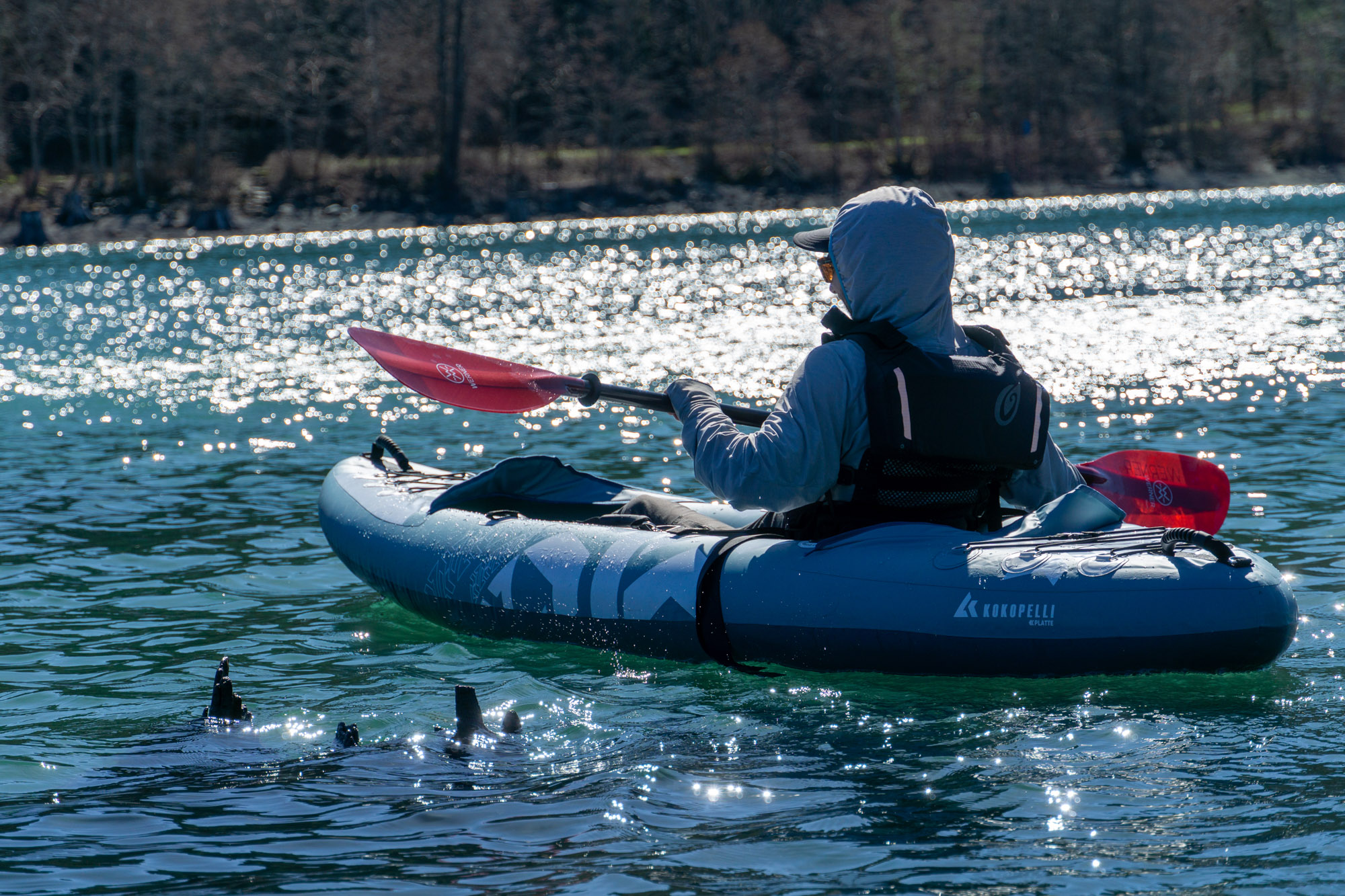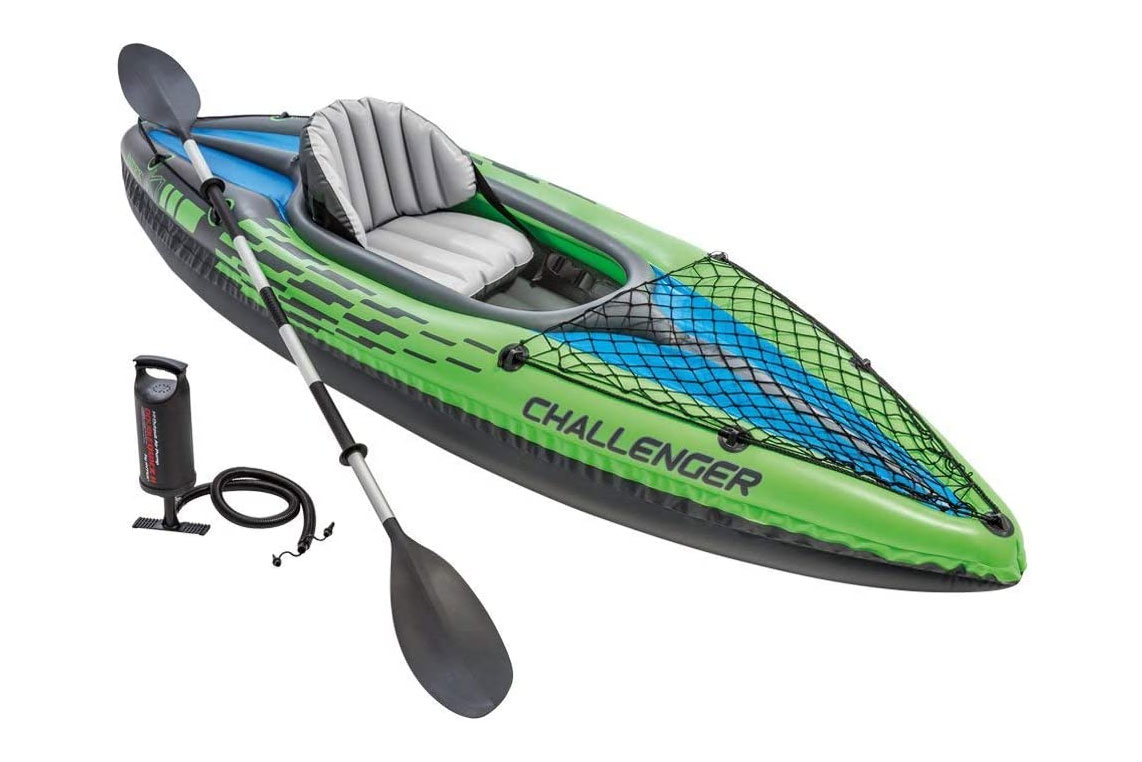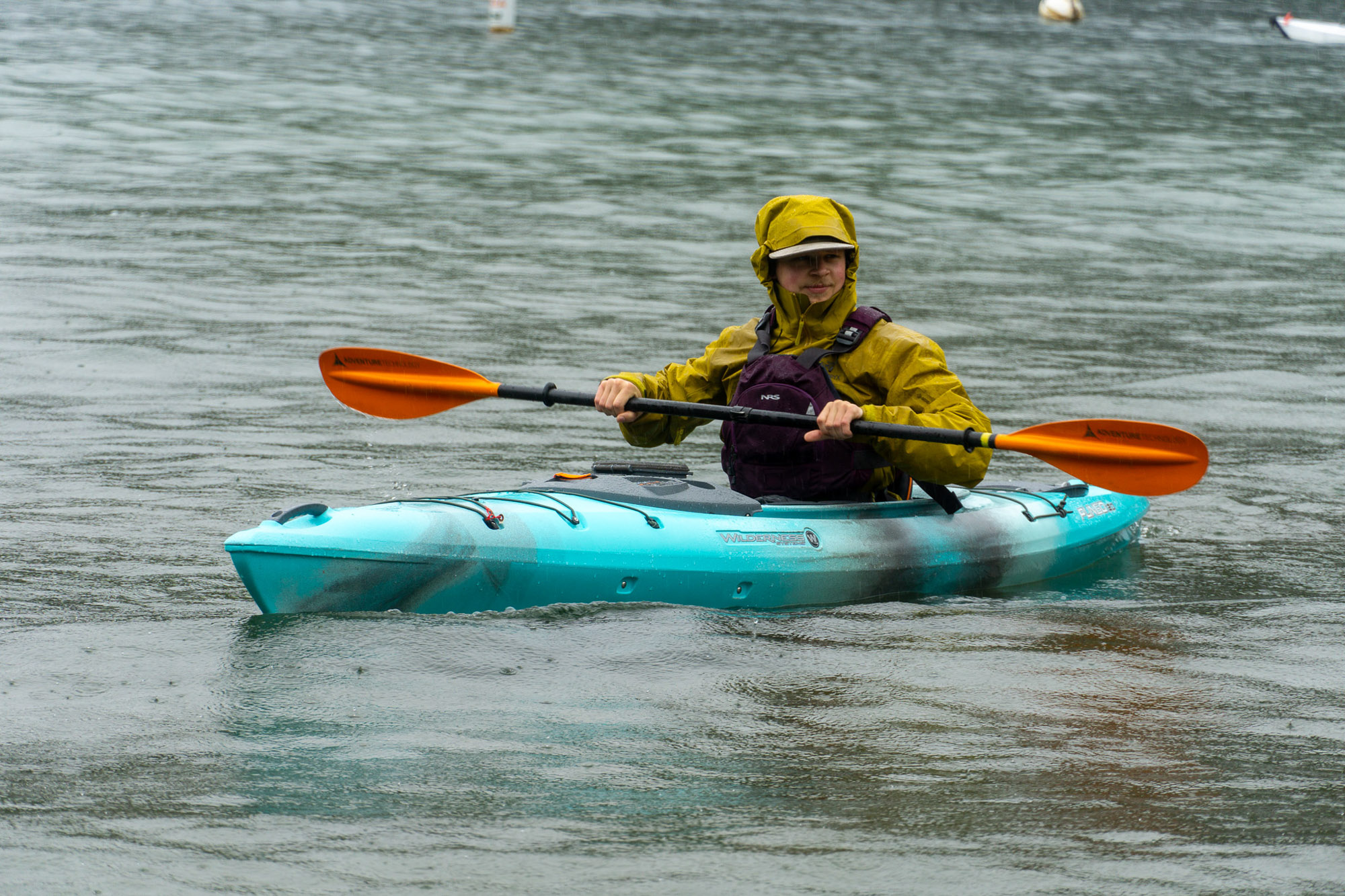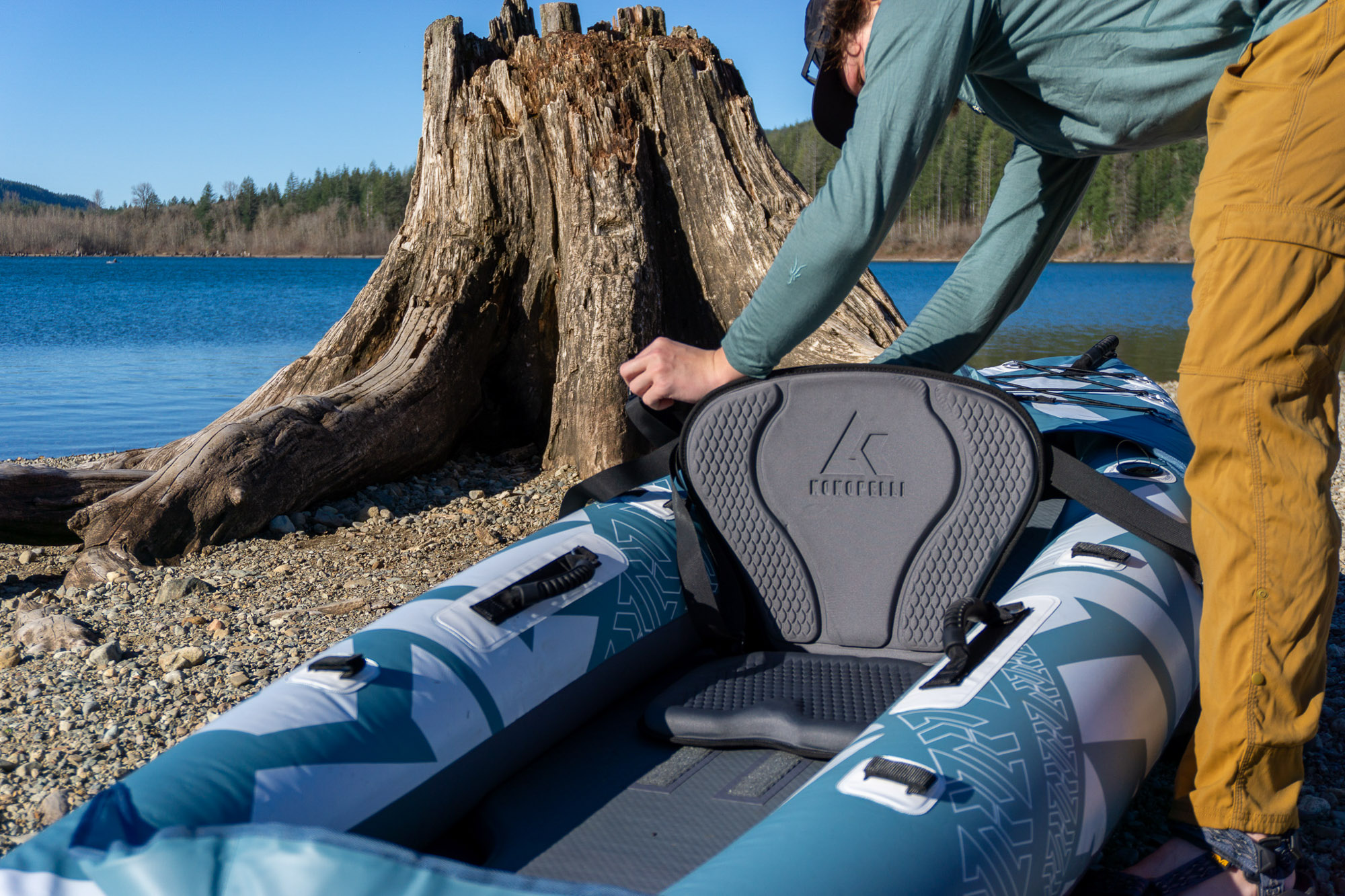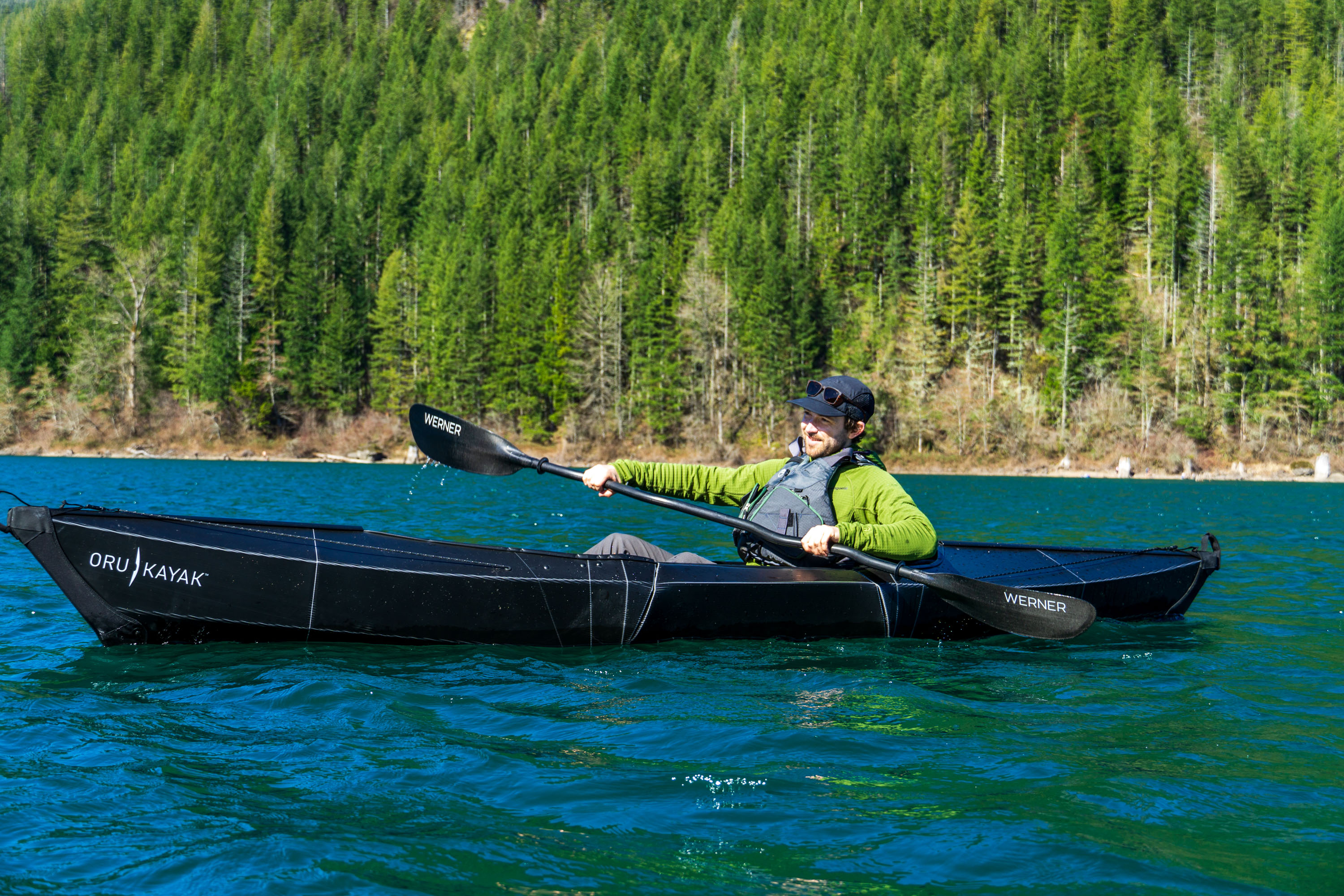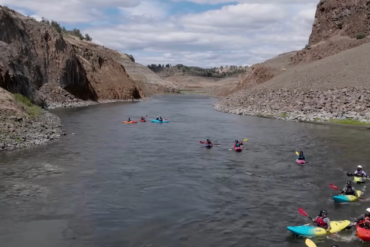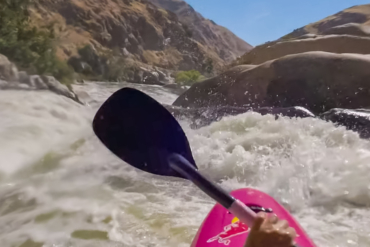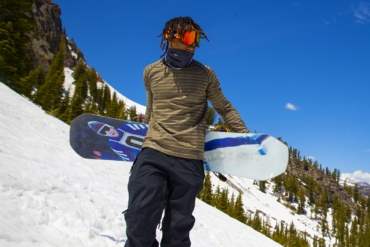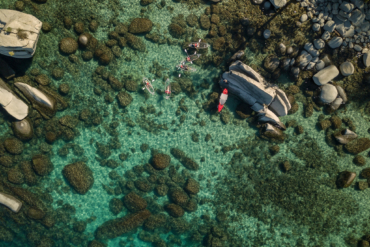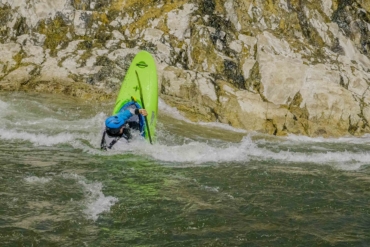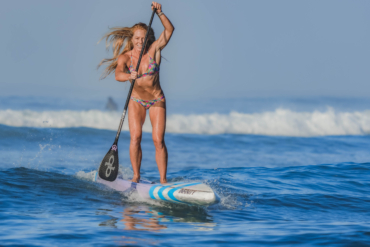If you’re looking to jump into kayaking, the options can seem overwhelming. Luckily, we’ve taken the plunge and dipped our paddles in the best beginner kayaks the market has to offer, testing more than 20 vessels for five years now with an eye toward the easiest models to learn in.
There are many different types and styles of kayaks, but we’ve cut through the static and laid it bare here. Sit-on-top models are undoubtedly the easiest for new paddlers to jump into, and our top pick, the Old Town Malibu 9.5, is one of the best we’ve ever paddled. We’ve also surveyed the budget scene for perfect kayaks to stick the kiddos in at the lake house, and the Pelican Argo 100X gets our unanimous vote.
All these recommendations come service of many hours spent bending a paddle and getting to know these kayaks. Our experts range from whitewater and touring kayak guides to rank amateurs (with good taste), and we’ve paddled the islands of the Salish Sea to the alpine lakes of Colorado to find the best out there.
Editor’s Note: We updated our Beginner Kayak guide on June 6, 2025, to add our new best budget pick, the Pelican Argo 100X, as well as our new inflatable kayak choice for beginners, the Sea Eagle SE370.
The Best Beginner Kayaks of 2026
Old Town Malibu 9.5
- Style: Sit-On-Top
- Length: 9.5'
- Width: 33"
- Weight: 54 lbs.
- Construction: Single layer rotomolded polyethylene
- Cockpit Size: N/A
- Weight Capacity: 325 lbs.
- Storage: QuickStash dry hatch in cockpit, bow and stern storage wells with bungee cordage
Pros
- Incredibly stable to paddle and easy to get into and out of
- Open top design and scuppers drain water quickly
- Up-turned bow breaks through small surf
- Four carry handles for easy transport
- Molded-in foot rests accommodate a large range of paddlers
Cons
- Trades stability for tracking ability, can be tough for some to paddle straight
- Seat is minimal
Pelican Argo 100X
- Style: Sit-Inside
- Length: 10'
- Width: 28"
- Weight: 36 lbs.
- Construction: Double layer thermoformed 'Ram-X' polyethylene
- Cockpit Size: 56" x 22"
- Weight Capacity: 275 lbs.
- Storage: Bow dry hatch, stern storage well
Pros
- Budget price
- Double-layer hull material feels pretty tough
- Nice and stable design is easy to get into and out of
- Quite lightweight and easy to carry solo
Cons
- Front bow storage hatch isn't very waterproof
- Carry handles are cheap, and broke off on us
- Seat isn't the most comfortable
Advanced Elements Advanced Frame Convertible
- Weight: 52 lbs.
- Length: 15'
- Width: 32"
- Number of Paddlers: 1 or 2-person
- Material: Polyester and PVC tarpaulin
- Storage: Bow and stern wells, bungee cord on bow
Pros
- Durable
- Capacity of 550 lbs.
- Can be used as a single boat or a tandem
- Tracks well
- Handles speed with ease
- Ample storage space
Cons
- Heavy
- More expensive than other options
- Setup is difficult, especially with just one person
Hobie Mirage Passport 10.5 R
- Weight: 65 lbs. (fitted hull weight); 75 lbs. (fully rigged weight)
- Length: 10'5"
- Width: 34"
- Number of Paddlers: 1-person
- Material: Polyethylene plastic
- Storage: 8" hatch and bow/stern wells with bungee cord
Pros
- Very comfortable seat
- Waterproof gear storage with hatch
- Rod mounts and accessories to personalize your kayak
- Kick-up/retractable fins
- Good price
- High-tech rotomolded construction
Cons
- Lots of individual components
- Heavier than most other kayaks on this list
Sea Eagle SE370
- Length: 12'6"
- Width: 35"
- Weight: 40 lbs.
- Construction: 38-mil PVC
- Weight capacity: 650 lbs.
- Storage: N/A
Pros
- Intuitive setup
- High weight capacity of 600+ pounds
- Bundles offer good value
- Easy-to-drain design
- Seats double as flotation devices
Cons
- Heavy weight
- Bundles have fixed-length paddles
- Short for two people
- Mediocre seat comfort and stability
Oru Kayak Inlet
- Weight: 20 lbs.
- Length: 9'8"
- Width: 31"
- Number of Paddlers: 1-person
- Material: Corrugated polypropylene
- Storage: Open bow and stern areas
Pros
- Super light
- Easy to set up and fold down
- When folded up, the kayak can be carried with a simple shoulder strap
- Padded seat
- Open cockpit is simple to enter and exit
- Beginner-friendly
Cons
- Maximum weight capacity of 275 lbs.
- Expensive
- Does not track especially well
Perception Hi Five
- Weight: 21 lbs.
- Length: 6'
- Width: 24"
- Number of Paddlers: 1-person
- Material: Polyethylene
- Storage: N/A
Pros
- Good value
- Entire watercraft is one durable piece of molded plastic
- Progression-focused
- Lightweight and easy to transport
Cons
- Not the most comfortable seat
Other Kayaks Primed for Beginners
- Weight: 55 lbs.
- Length: 10'6"
- Width: 32"
- Number of Paddlers: 1-person
- Material: Polyethylene plastic
- Storage: Front covered hatch, rear storage well
Pros
- Comfortable seat
- Easy to climb in and out of, even while out on the water
- Makes smooth turns, impressively maneuverable
- Useful for lots of activities
- Packed with thoughtful features
Cons
- Glides slowly
- More expensive than other options
- Length: 10'3"
- Width: 34"
- Weight: 24 lbs.
- Construction: 1000D reinforced PVC
- Weight Capacity: 330 lbs.
- Storage: Bow and stern wells + bungee cord deck systems
Pros
- Lightweight
- High-quality and tough 1,000D outer material
- Good tracking with 9" and 5" fins attached
- Easy to set up and pack down
Cons
- Not a lot of cargo space
- Lower rails lets water splash in
- Weight: 28 lbs., 4.4 oz.
- Length: 9'
- Width: 30"
- Number of Paddlers: 1-person
- Material: Vinyl
- Storage: Front cargo net
Pros
- Affordable
- Packs down into an included duffel bag
- Comes with a paddle and pump
- Tracks and steers well
- Removable and adjustable seat
Cons
- No drain plug
- Not the most durable
- Included pump inflates slowly
Beginner Kayak Comparison Chart
| Kayak | Price | Weight | Length | Number of Paddlers | Storage |
|---|---|---|---|---|---|
| Old Town Malibu 9.5 | $700 | 54 lbs. | 9’5″ | 1-person | Center accessory hatch, front and rear storage wells |
| Pelican Argo 100X | $340 | 36 lbs. | 10′ | 1-person | Bow dry hatch, stern storage well |
| Advanced Elements Advanced Frame Convertible | $980 | 52 lbs. | 15′ | 1- or 2-person | Bow and stern wells, bungee cord on bow |
| Hobie Mirage Passport 10.5 R | $1,799 | 75 lbs. | 10’5″ | 1-person | 8″ hatch and bow/stern wells with bungee cord |
| Sea Eagle SE370 | $359 | 40 lbs. | 12’6″ | 2-person | N/A |
| Oru Kayak Inlet | $899 | 20 lbs. | 9’8″ | 1-person | Open bow and stern areas |
| Perception Hi Five | $299 | 21 lbs. | 6′ | 1-person | N/A |
| Wilderness Systems Tarpon 105 | $1,119 | 55 lbs. | 10’6″ | 1-person | Front covered hatch, rear storage well |
| Kokopelli Platte Inflatable Kayak | $949 | 24 lbs. | 10’3″ | 1-person | Bow and stern wells + bungee cord deck systems |
| Intex Challenger K1 | $135 | 28 lbs. | 9′ | 1-person | Front cargo net |
How We Tested the Best Beginner Kayaks
Our Expert Testers and Testing Grounds
Our lead paddle tester, Nick Belcaster, has no shortage of water at hand, living between the mountains and the sea in Washington State. Between packrafting glacial rivers running out of the North Cascades and stringing together islands in the San Juans on overnight trips, he gets a good amount of paddle time in and can talk ad nauseam on the benefits of a hard versus soft chine.
Contributor Austin Beck-Doss laid the ground floor for this guide in 2021 with an initial slate of eight kayaks, having proved their mettle on the lakes around Lander, Wyo. He came to the market slice a total amateur, making his impressions highly relatable for those who are also trying out this whole kayaking thing for the first time.
We sought the opinions and testing feedback from both our salt-sprayed and tanned aqua-pros, as well as the total paddling newbies among us. Not all beginners will need the same kind of kayak, so we carefully considered dozens of boats and highlighted the best options in several categories. In every category, our recommended kayak had to beat out several other models to earn its place.
Our Testing Process
To identify our top picks, we considered overall value, usability, build quality, durability, and much more. We examined materials, studied brands, and compared price tags down to the last detail. And then, we paddled our arms off. Every boat has multiple months of casual use under its belt, which we find gives enough time for any gremlins to show themselves.
Because these kayaks need to be tailored to the needs of those new to kayaking, we also leaned heavily on testing input from our friends and family who aren’t as familiar with the sport. As new kayaks hit the market, we’ll be sure to test them in consideration for this list. Our testing spans the entire spectrum of paddling vessels, from full-fledged kayaks to inflatable kayaks, and at any given time, our roundup will include the best of the best.
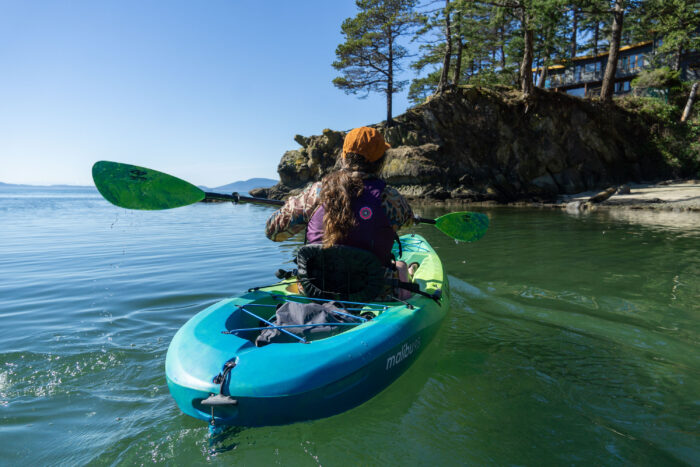
Buyer’s Guide: How to Choose a Beginner Kayak
Before you purchase a beginner-level kayak, you first need to determine what type of kayaking you want to do. There are lots of well-made and high-quality kayak brands, and most brands offer options for a wide range of paddling pursuits. Once you know what kind of attributes you are looking for in a kayak, it will become much easier to choose.
If you want a kayak for mellow cruising on a backyard pond or small lake, you do not want to purchase a sea kayak that is made for slicing through big waves. Similarly, if you need a kayak that will be easy to transport, you don’t want to purchase something bulky and heavy.
There are a few key things to consider when deciding what your kayaking needs really are. There are many unique categories of kayaks, and each category has its own strengths and drawbacks.
In this buyer’s guide, we will provide information about many of these categories, including sit-on kayaks, sit-in kayaks, tandem kayaks, recreational kayaks, day touring kayaks, inflatable kayaks, folding kayaks, pedal-powered kayaks, and whitewater kayaks.
Once you have identified which category best fits your needs and plans, other important considerations to keep in mind include material, weight, capacity, durability, and price. Purchasing the right kayak can feel confusing, but with the use of this in-depth guide, we hope you’ll be able to identify the right kayak to buy.
Types of Kayaks: Design
Sit-on-Top and Sit-Inside Kayaks
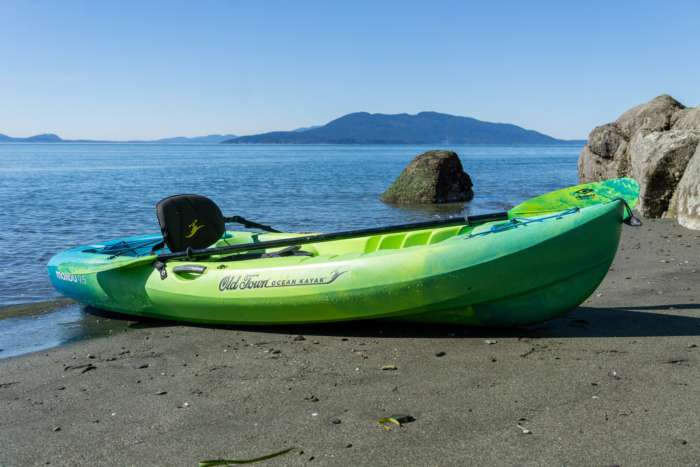
Sit-on-top kayaks do not have an internal, hollowed-out cockpit that you have to climb into. Instead, this style of kayak allows you to sit right on top of the boat, where your legs will be exposed to the open air.
Sit-on-top kayaks tend to be easier to get on and off than sit-in kayaks. Also, sit-on-top kayaks tend to feel more stable than sit-ins, especially for new paddlers who are getting used to the water.
Sit-on-top kayaks are good for warm weather because the user is likely to get wet. This style of kayak is also better for users who plan to paddle with a dog on board.
Sit-inside kayaks have an internal cockpit that you have to climb into to paddle. When paddling a sit-in kayak, you will have a low center of gravity, and the rotation of your hips will be more involved in steering the boat.
Some sit-in kayaks that are built for whitewater paddling utilize spray skirts that cover the cockpit to prevent water from getting inside. Sit-in kayak users will experience less wind resistance than sit-on-top kayakers.
Recreational, Touring, and More
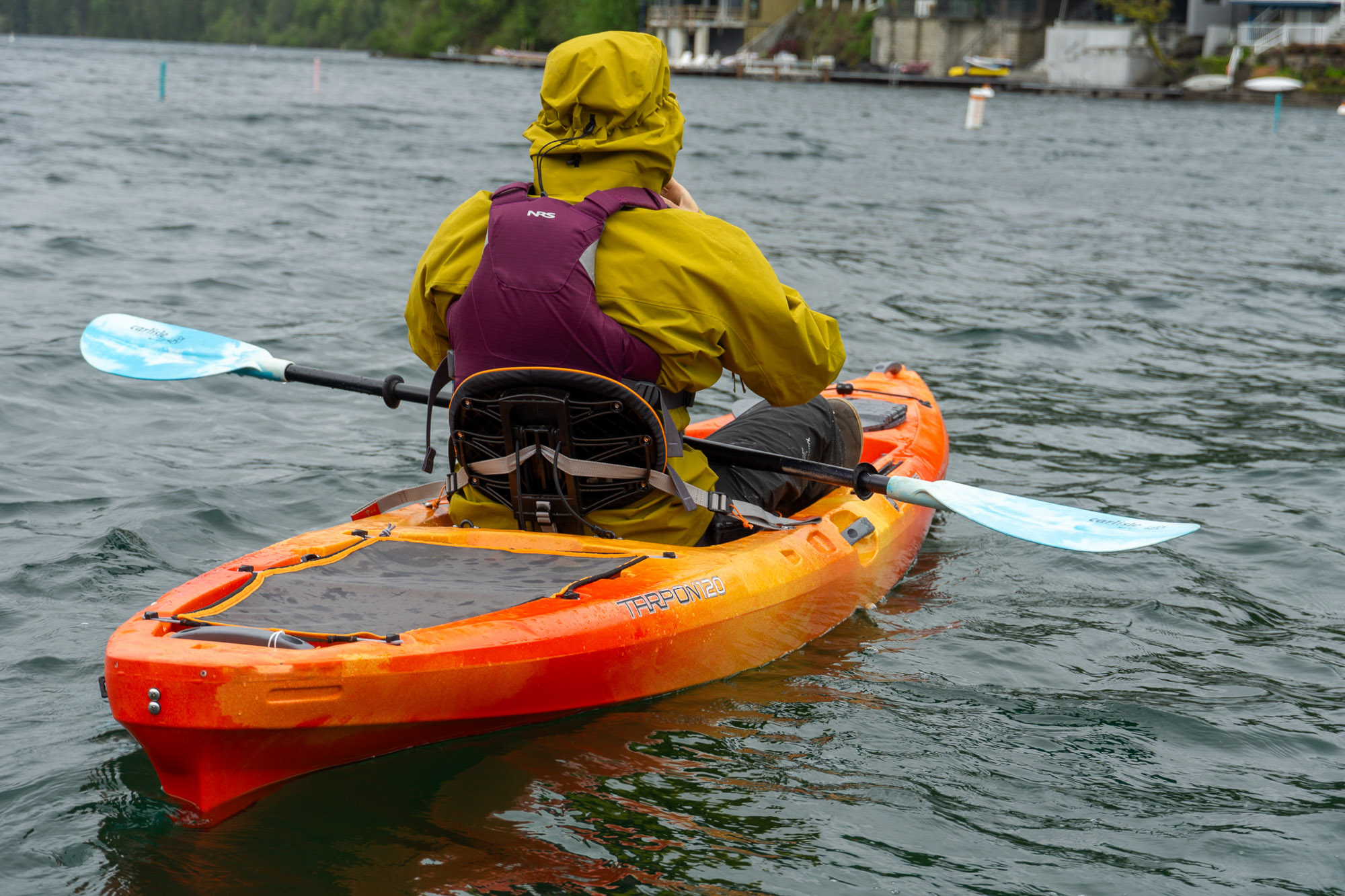
Recreational Kayaks
When a kayak is labeled “recreational,” that means it’s built to prioritize fun over high-end performance. Recreational kayaks will not be the fastest or lightest boats on the market, but they will include practical features that maximize comfort and allow you to enjoy your paddling experience.
Day Touring Kayaks
Day touring kayaks are meant for single-day excursions. These boats lack adequate storage space for overnight trips or expeditions. Often, day-touring kayaks are simple and user-friendly vessels built for a quick session on the water.
Tandem Kayaks
Tandem kayaks are paddled by two people at once. To allow this, these boats are usually longer than single-user boats and include two seats instead of one.
Tandem boats can be inflatable or made of solid material. The process of learning how to paddle in sync with your partner can be a fun and tricky challenge.
Inflatable Kayaks
Inflatable kayaks are filled with air like a balloon and can be deflated when not in use. For users who do not have enough storage space to keep a rigid plastic kayak at home, an inflatable kayak can be a fantastic solution.
Inflatable kayaks typically have multiple compartments that must all be pumped full of air before use. This list includes both single-user and tandem inflatable kayaks that we recommend.
Folding Kayaks
In recent years, many folding lightweight kayaks have entered the market. These boats aim to maximize portability for kayakers who don’t have a lot of available storage space in their lives.
Folding kayaks require some practice to assemble and set up properly. Although folding kayaks tend not to be as durable on the water as solid plastic kayaks, they tend to be more lightweight than any other category of kayaks.
Pedal Kayaks
Pedal-powered kayaks do not require a paddle to move about the water. Instead, these kayaks are operated using your legs, either by pushing or rotating the pedals to generate thrust. This style of kayak is excellent for fishing because the foot pedals leave your hands free to cast out and tend to your fishing rod.
Material vs. Weight
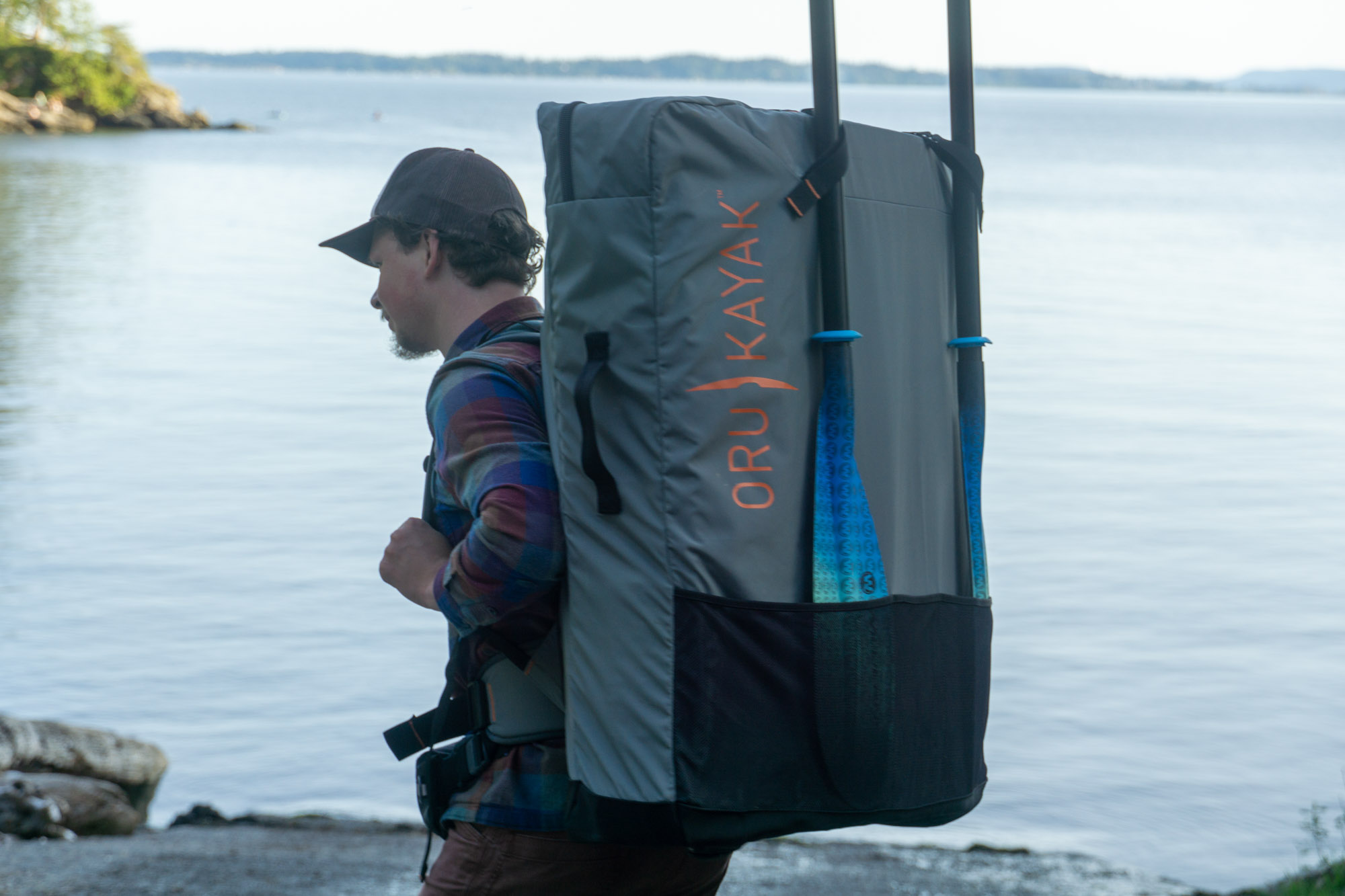
Most kayaks on the market these days are made of solid plastic, inflatable abrasion-resistant PVC, thin, foldable plastic, or fiberglass. Different materials work well for different functions.
Solid plastic boats tend to be the most durable. Inflatable PVC and foldable plastic are lighter and easier to pack down and store in a small space.
If you plan on paddling with a dog on board, it may be wise to steer clear of inflatable kayaks that can be punctured. Solid plastic kayaks tend to be heavier than inflatable and foldable kayaks. (And obviously, tandem kayaks are heavier than single kayaks.)
If you plan to kayak alone and need to load and unload your kayak from your car on your own, it is wise to purchase a lighter kayak that you can easily carry. Or, get a kayak dolly. Kayaks on this list vary widely by weight, so be sure to check the kayak’s weight before purchasing.
Capacity
The majority of brands measure kayak capacity by weight. Before you purchase a kayak, make sure that the boat will be able to accommodate the total weight of the anticipated user (plus the weight of any gear). It’s good to stay on the conservative side of a boat’s capacity limit to ensure that it will perform safely and as intended.
Durability

Kayaks are built to be durable, but not all boats are created equal. Inflatable watercraft tend to be less durable than solid plastic ones because they are vulnerable to punctures.
To maximize the longevity of your kayak’s life, be careful not to drag it along jagged rocks during loading and unloading. When storing your kayak, be sure to keep it out of the full sun and away from potentially harmful objects and substances. And of course, always follow PSI recommendations to prevent overinflation of inflatables.
Price & Value
Kayaks are an investment, but thankfully, the best beginner kayaks are offered up at lower prices than models made for more intense use. Approachability is a huge metric we consider when making our selections, but even still, there’s a range of prices you’ll encounter when deciding which kayak is best for you.
Budget
Budget kayaks for beginners will typically run you around $150-400 and fit a similar formula. Rotomolded plastic, single seats, and limited features are hallmarks here, but you can still get a great kayak for the price. The Pelican Argo 100X ($349) is our top pick for a budget beginner kayak currently, and paddles impressively well compared to even our top overall choice.
You can also get into a cheaper inflatable kayak for less money, and the $135 Intex Challenger K1 gets the job done without feeling like a pool toy. On-water won’t be particularly flashy, but it’s more about just getting out on the water at this price point.
Mid-Tier
Spending a bit more opens up your kayak horizons a bit more, and for $500-900, you can get into a 9-10′ kayak with a few extra niceties on board. Our top pick, the Old Town Malibu 9.5 ($700), sports storage wells at both the bow and stern, and even a water-resistant hatch in front of the seat for your phone and keys.
For these prices, you can also get into a more specialized kayak, like the fully inflatable Kokopelli Platte ($899) or the folding Oru Kayak Inlet ($899). Either ask a bit more for their enhanced portability, but are well worth it in our opinion.
Premium
A “premium-beginner” anything sounds like a misnomer, but there’s good sense in spending a bit more to get a kayak that is specialized — certainly so when you look at the price of comparable models. For example, the $1,799 Hobie Mirage Passport 10.5 R seems like a chunk of cash, but compared to the $2,000-4,000 you’ll spend on top-of-the-line pedal fishing kayaks, it’s a downright steal.
Similarly, the Wilderness Systems Tarpon 105 ($1,119) is a good bit more than our top pick, but we like to think of this kayak as a stepping stone to higher kayaking aspirations. A wide variety of accessories adorn this kayak, and the longer length can accommodate more gear onboard for longer voyages.
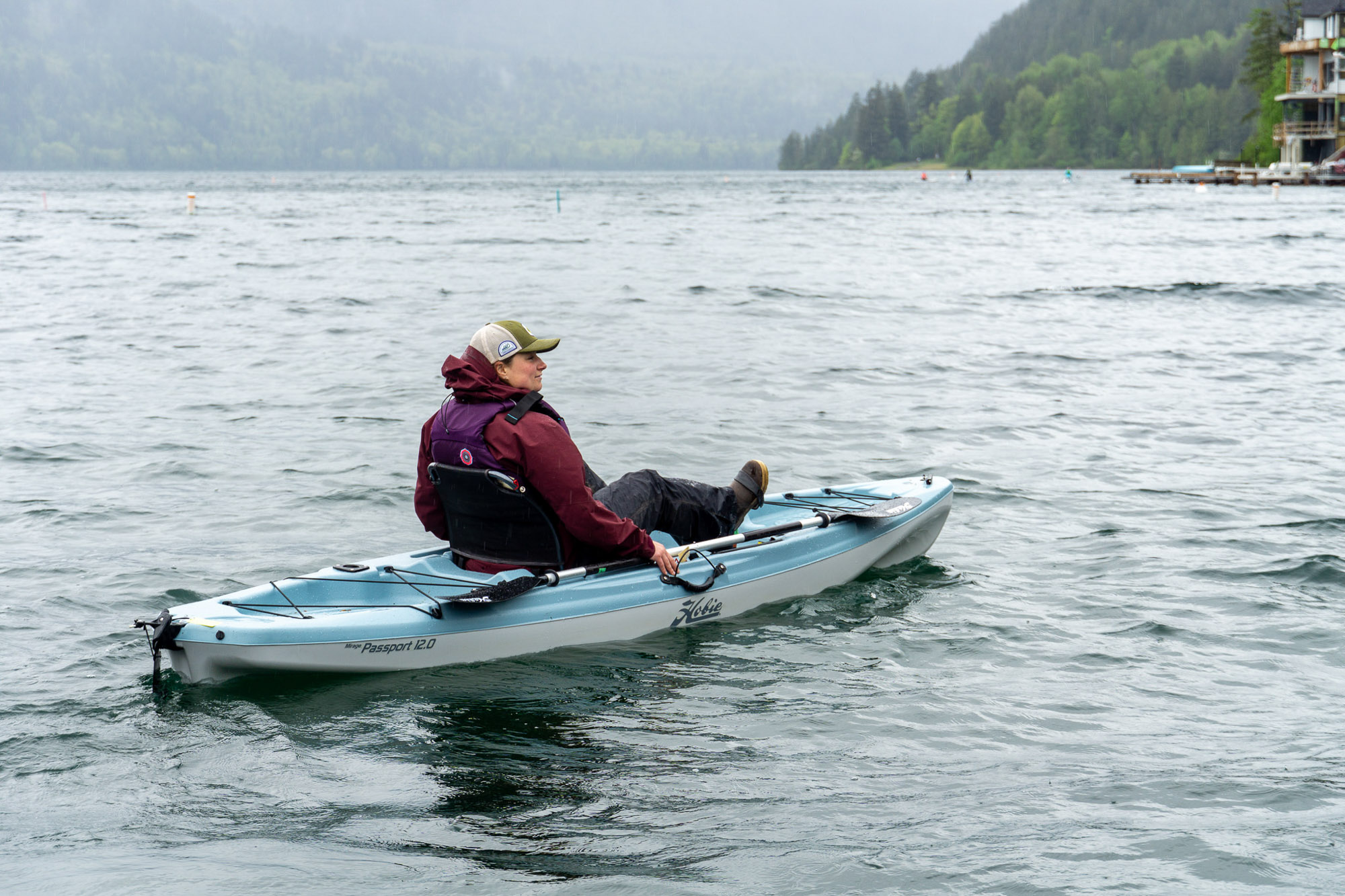
Frequently Asked Questions
We recommend all of the kayaks on this list to beginner paddlers. Ultimately, the best kayak will be the one that meets your individual needs and helps you progress as a paddler. Depending on your lifestyle, storage space, preferred paddling location, and other factors, some kayaks will suit you better than others.
There are kayaks of all shapes and sizes on the market. The size and shape of kayaks vary depending on their intended function. Beginner kayaks tend to be between 9-12 feet long and 2-3 feet wide.
Long, thin kayaks are built for going fast in a straight line and cutting through choppy water and waves. Short, stubby kayaks are made to be nimble and easy to turn in fast-moving streams and whitewater. Many of the kayaks on this list are midsize to provide a good balance between smooth tracking and maneuverability.
Most kayaks — regardless of their size or shape — can accommodate paddlers of various heights and weights. Before purchasing a kayak, check to make sure it can accommodate a paddler of your size.
Neither kayak style is strictly better — they simply have different strengths and weaknesses.
A sit-on-top kayak is easier to climb in and out of, especially while out on the water. Sit-on-top kayaks also tend to be better for kayaking with a dog on board. Overall, sit-on-top kayaks tend to be more comfortable for long paddling sessions, as they allow the user to stretch their legs and move around.
Sit-in kayaks keep the paddler’s center of gravity low, which decreases wind residence and creates superior maneuverability. In colder or rainy weather, sit-in kayaks allow the user to stay fairly dry, especially with the use of a spray skirt.
Most kayaks are made to accommodate people of a wide range of heights. Many recreational kayaks for beginners are around 10 feet long and will be suitable in size for most adults up to 6 feet tall. For those taller than 6 feet, a recreational kayak around 12 feet long will likely be a better fit.
It can be helpful to test a kayak’s size by sitting in it before purchasing. Make sure there’s enough legroom and your hips fit comfortably in the seat and cockpit. Many kayaks have multiple or adjustable footrests to accommodate paddlers with shorter or longer legs.
Having a properly sized paddle can make all the difference. When deciding on the length of your paddle, you must consider both your own height and the width of your kayak. Generally, the wider the kayak is, the longer the paddle you’ll need to ensure that the sides of the boat won’t get in the way of the paddle blades entering the water.
Most of the beginner kayaks on this list are between 24 and 32 inches wide. So, here is a basic guideline for how to size kayak paddles for kayaks that are between 24 and 32 inches wide.
Paddlers under 5’5” should use a paddle that’s about 220 cm in length. Folks between 5’5” and 5’11” should use a paddle that’s about 240 cm in length. Paddlers over 5’11” should use a paddle that’s around 250 cm in length.
Adjustable paddles are a good idea for those who will not be able to test out their paddles before purchase. Adjustable paddles are also great as they divide into pieces for storage and travel.

The Best Kayaks of 2026
Kayaks are the original all-terrain vehicles, and we tested the best from Old Town, Wilderness Systems, Eddyline, and more!
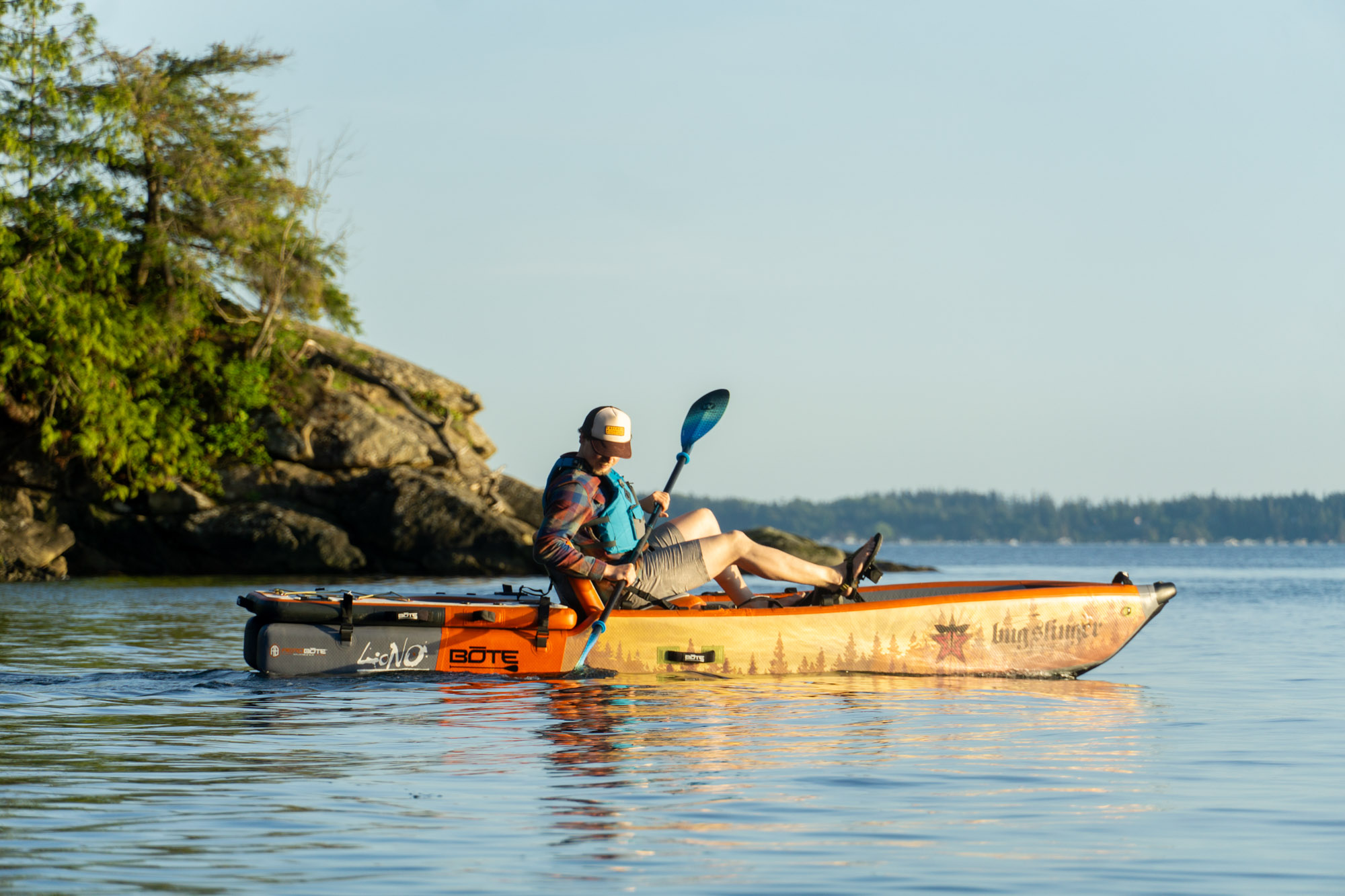
The Best Inflatable Kayaks of 2026
Just inflate and go. We tested the best inflatable kayaks today, with capable and packable award winners from Advanced Elements, NRS, BOTE, and more.
